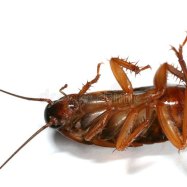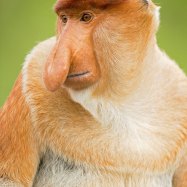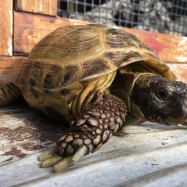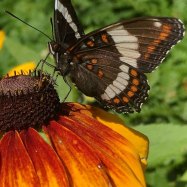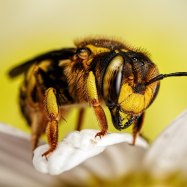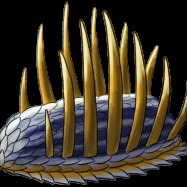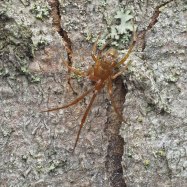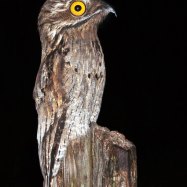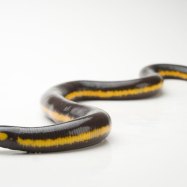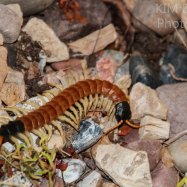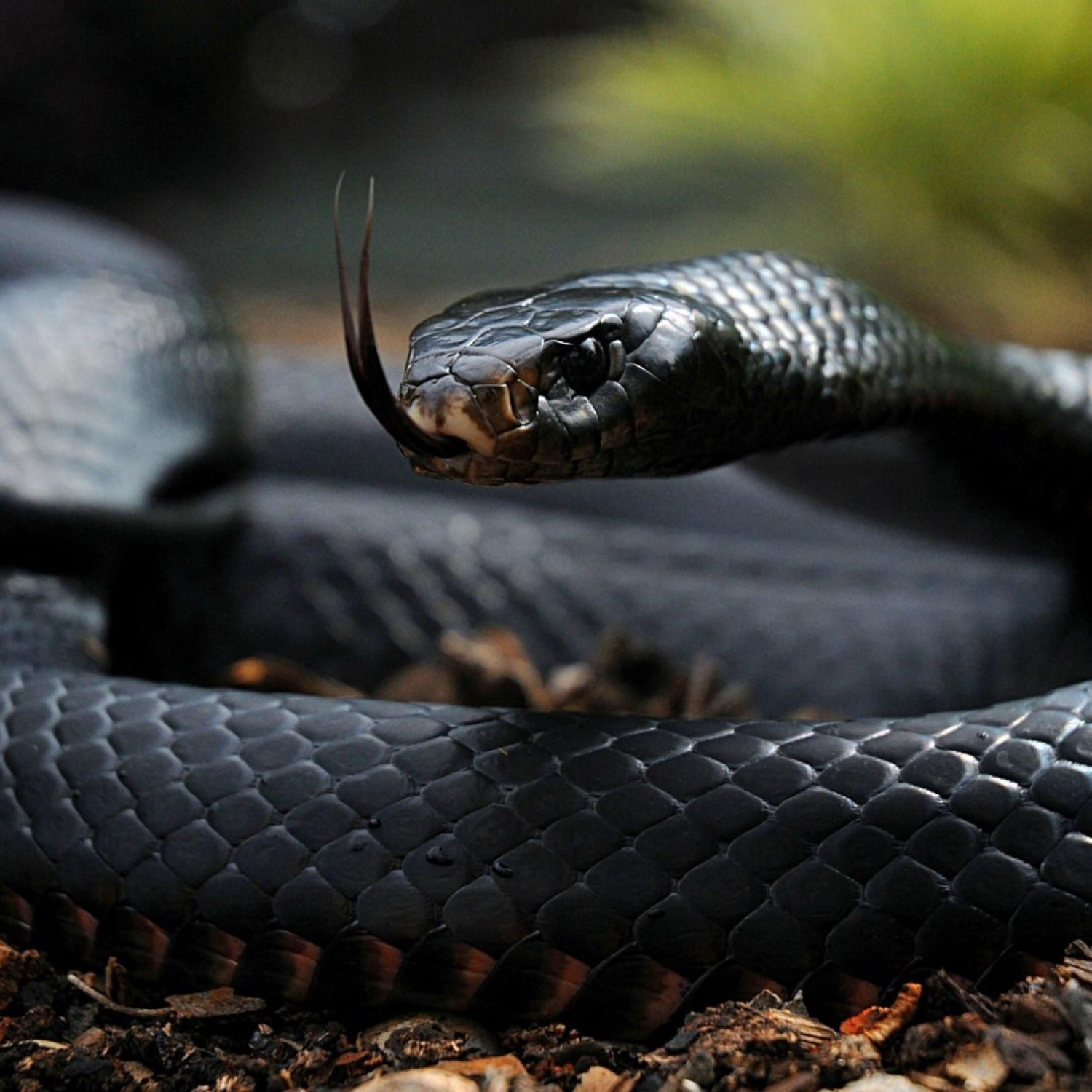
Black Mamba
1.8 to 2.5 meters (5.9 to 8.2 feet)
The Black Mamba is a highly venomous snake found in Sub-Saharan Africa. With a length of 1.8 to 2.5 meters and a slender, elongated body, it can be easily identified by its coffin-shaped head. Make sure to steer clear of this deadly species during your next trip to Africa! #BlackMamba #Elapidae #SubSaharanAfrica #SnakeSafety.
Animal Details Summary:
Common Name: Black Mamba
Kingdom: Animalia
Habitat: Savannahs, rocky slopes, and dense forest
The Black Mamba: A Deadly and Fascinating Snake of Africa
Located in the heart of sub-Saharan Africa, among the sprawling savannahs, rocky slopes, and dense forests, lives one of the world's most feared and deadly creatures – the Black Mamba. With its sleek and menacing appearance, this snake has long captured the imagination of people all around the world. Its graceful movements and lightning-fast strikes have both fascinated and terrified us for centuries.But beyond its reputation as a lethal killer, the Black Mamba is a truly remarkable animal Black Mamba. In this article, we will delve into the world of this serpent and discover its unique characteristics, behaviors, and its vital role in the ecosystem.
The Scientific Name
The Black Mamba, with its scientific name Dendroaspis polylepis, belongs to the animal kingdom Animalia, the phylum Chordata, and the class Reptilia. It falls under the order Squamata and the family Elapidae. Its closest relatives include cobras, mambas, and sea snakes.The Common Name
The Black Mamba is aptly named, as its body color is a dark olive green or brown, with a creamy or gray underbelly. However, its name also comes from the black coloration inside its mouth, which it displays when threatened or preparing to strike. This adds to its intimidating appearance and serves as a warning to predators or potential threats.Habitat and Distribution
The Black Mamba is found only in sub-Saharan Africa, inhabiting almost all countries in the region. Its favorite habitats include open savannahs, rocky slopes, and dense forests Barreleye Fish. In these areas, it finds plenty of hiding spots and prey to sustain its carnivorous appetite.Feeding Method
As a carnivore, the Black Mamba has a varied diet consisting mainly of small mammals, birds, and reptiles such as rodents, bats, and lizards. It also has an affinity for eggs and will not hesitate to devour an entire nest if given the chance. Its feeding method is unique in that it injects neurotoxic venom into its prey, causing paralysis and death within minutes. It then swallows its meal whole, using its flexible jaws to accommodate prey much larger than its head.While it may seem like a ruthless killer, the Black Mamba actually plays a vital role in controlling rodent populations in its habitat. Without this natural predator, these pests would multiply exponentially, causing destruction to crops and disturbing the ecosystem.
Body Shape and Size
The Black Mamba has a slender and elongated body, typical of most snakes, but what sets it apart is its coffin-shaped head. This unique feature adds to its menacing appearance and allows it to open its mouth wider, enabling a more significant prey item to be swallowed. On average, the Black Mamba measures 1.8 to 2.5 meters (5.9 to 8.2 feet) in length, making it one of the largest venomous snakes in Africa.Behavior and Communication
The Black Mamba is a solitary animal, preferring to spend most of its time alone. It is also mainly active during the daytime, as it is a diurnal carnivore. When threatened, it will exhibit aggressive behaviors, such as raising its head and opening its mouth, displaying its black inner lining as a warning.Despite its fearsome reputation, the Black Mamba prefers to flee than attack humans, and will only strike if it feels threatened or cornered. Unfortunately, when it does bite, its venom is capable of killing a human in a matter of hours if left untreated. However, human fatalities are relatively rare, as these snakes are wary of humans and will usually retreat if given space.
Reproduction and Survival
Breeding season for the Black Mamba occurs in the rainy season when there is ample food and water supply. The female lays between 6 to 25 eggs, which she incubates for approximately 80 days. Once hatched, the young are independent and can survive on their own.Like most animals, the Black Mamba has natural predators, including birds of prey, mongooses, and other snakes. However, its biggest threat comes from human activities such as habitat destruction and poaching. Despite being protected by law in many countries, they are often killed due to fear or superstition.
The Importance of Conservation
The Black Mamba may be known for its lethal venom and intimidating appearance, but it is also a significant species in its ecosystem. As a top predator, it helps keep the food chain in balance by controlling the population of rodents and other prey animals.However, due to habitat destruction and human activities, the Black Mamba's population is declining. It is crucial to conserve this species, not only for its critical role in the environment but also for its unique characteristics and the potential benefits it may hold for medical research.
Black Mamba Myths and Legends
Throughout history, the Black Mamba has been the subject of many myths and legends, adding to its mysterious and fearsome reputation. In African folklore, it is often associated with witchcraft and dark magic. It is believed that a shaman or witch with the power to control snakes can command the Black Mamba to do their bidding.In some cultures, it is also believed that the Black Mamba has the power to disappear into thin air, making it impossible to catch. While this may seem like a wild superstition, it is actually based on the snake's ability to move swiftly and disappear into dense vegetation.
In conclusion
The Black Mamba may be a feared and deadly creature, but it is also a fascinating and essential part of the African ecosystem. Its unique characteristics, behaviors, and role in the environment make it a truly remarkable animal. However, with increasing human activities and habitat destruction, it is crucial to protect and conserve this species for future generations to appreciate and admire. The Black Mamba may be a formidable force in the animal kingdom, but it also deserves our respect and protection.

Black Mamba
Animal Details Black Mamba - Scientific Name: Dendroaspis polylepis
- Category: Animals B
- Scientific Name: Dendroaspis polylepis
- Common Name: Black Mamba
- Kingdom: Animalia
- Phylum: Chordata
- Class: Reptilia
- Order: Squamata
- Family: Elapidae
- Habitat: Savannahs, rocky slopes, and dense forest
- Feeding Method: Carnivorous
- Geographical Distribution: Sub-Saharan Africa
- Country of Origin: Found in multiple countries in Africa
- Location: Sub-Saharan Africa
- Animal Coloration: Olive green or dark brown body color with a cream or grey underbelly
- Body Shape: Slender and elongated body with a coffin-shaped head
- Length: 1.8 to 2.5 meters (5.9 to 8.2 feet)
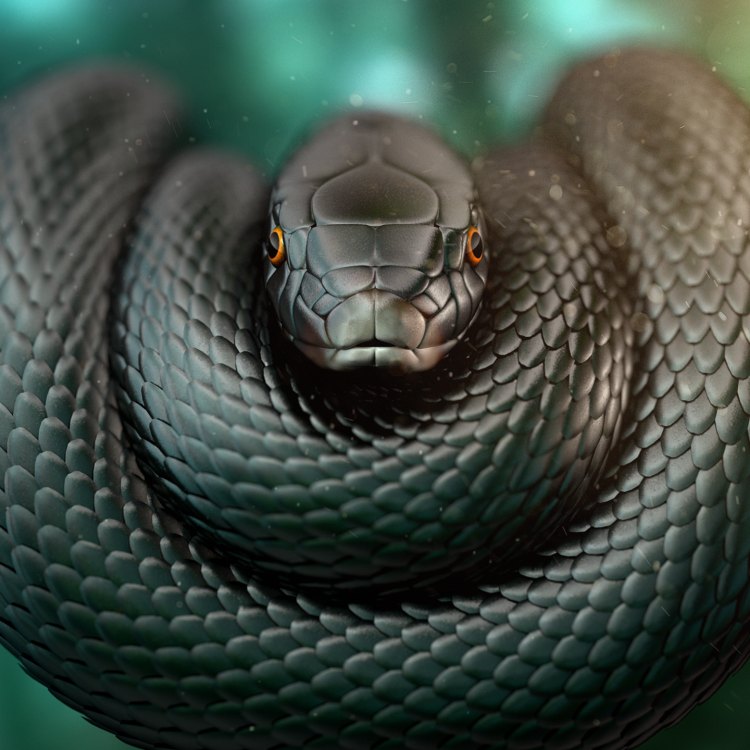
Black Mamba
- Adult Size: 2.2 to 2.7 meters (7.2 to 8.9 feet)
- Average Lifespan: 10 to 11 years in the wild
- Reproduction: Oviparous (lays eggs)
- Reproductive Behavior: Mating occurs between November and December with the female laying 6 to 25 eggs
- Sound or Call: Can produce hissing and rasping sounds when threatened
- Migration Pattern: Non-migratory
- Social Groups: Solitary
- Behavior: Aggressive when threatened, known for its speed and agility
- Threats: Habitat loss, hunting, and snakebite from humans
- Conservation Status: Not evaluated (IUCN red list)
- Impact on Ecosystem: Plays a role in controlling rodent populations
- Human Use: Venom is used for medical research and production of antivenom
- Distinctive Features: Long and slender body, highly venomous
- Interesting Facts: Fast-moving snake and feared for its deadly venom
- Predator: No significant predators
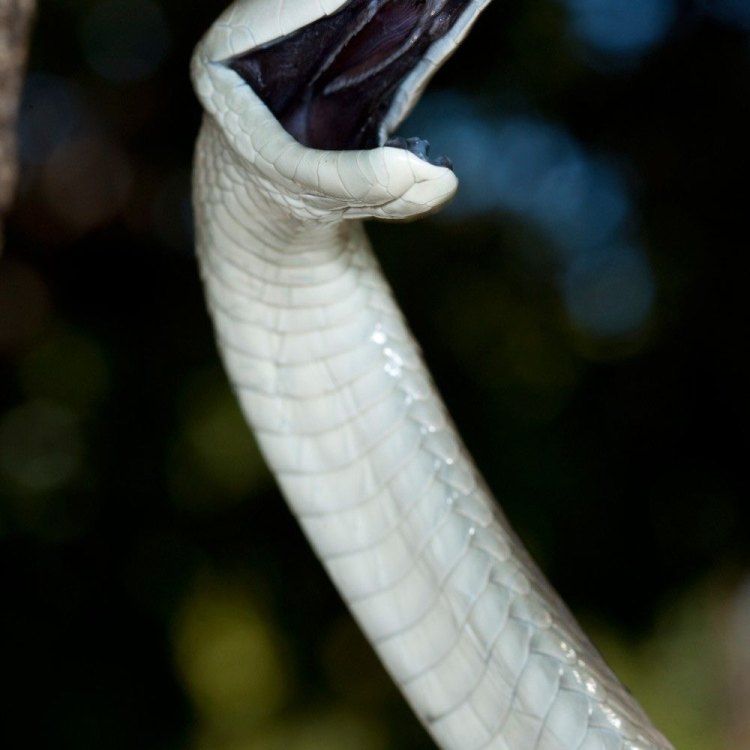
Dendroaspis polylepis
The King of Snakes: The Fascinating Black Mamba
In the vast and diverse world of snakes, there is one species that stands out above the rest – the Black Mamba. This highly venomous snake is a feared predator and a symbol of strength and speed. But there is more to this elusive creature than just its deadly venom and infamous reputation. In this article, we will delve into the unique features and behaviors of the Black Mamba, as well as its impact on the ecosystem and human use PeaceOfAnimals.Com.Adult Black Mambas are known for their impressive size, ranging from 2.2 to 2.7 meters (7.2 to 8.9 feet) in length. Despite its name, this snake is not entirely black. Its body is usually a mix of olive, gray, or brown, but its mouth and the inside of its mouth are dark, giving the appearance of a fully black snake. The Black Mamba belongs to the Elapidae family, which includes other deadly snakes such as cobras and taipans.
These snakes are found in the savannas and rocky hills of eastern and southern Africa Barylambda. They are mainly active during the day, searching for prey and basking in the sun. The average lifespan of a Black Mamba in the wild is between 10 to 11 years, but some captive snakes have been known to live into their late teens.
The Black Mamba is an oviparous species, meaning it lays eggs rather than giving birth to live young. Reproduction typically occurs between November and December, with the female laying 6 to 25 eggs in a hidden location, such as a hole in the ground or a hollow tree stump. The eggs hatch after about 80 days, and the newborn snakes are immediately independent and able to fend for themselves.
Mating and reproduction are not the only time when Black Mambas exhibit interesting behaviors. When threatened, they can produce hissing and rasping sounds that serve as a warning to potential predators. These snakes are also solitary creatures, preferring to live and hunt on their own. However, during the breeding season, males may perform a form of combat dance to compete for a female's attention.
Despite being solitary, Black Mambas are known for their aggressive nature when provoked. They are incredibly fast-moving snakes, capable of reaching speeds up to 20 kilometers per hour (12 miles per hour). With their highly venomous bite, they are a force to be reckoned with, and even experienced snake handlers must take extreme caution when handling them.
The Black Mamba's highly venomous nature is what makes it both feared and respected. Its venom is predominantly neurotoxic, meaning it attacks the nervous system, leading to paralysis and potentially death if left untreated. The venom is also fast-acting, with a bite from an adult Black Mamba containing enough venom to kill 10 to 25 adult humans.
These snakes are not only a threat to humans but also have a significant impact on their ecosystem. As top predators, Black Mambas play a crucial role in keeping rodent populations in check. In areas where these snakes have been eradicated, there has been a noticeable increase in rodent populations, leading to economic and health problems for humans.
Sadly, Black Mambas face threats to their survival, primarily due to habitat loss, hunting, and snakebite from humans. As human population and development expand, the habitat of these snakes is diminishing, making them more vulnerable to extinction. Additionally, Black Mambas are often hunted for their skins and body parts, believed to have medicinal properties in traditional medicine.
Despite these threats, the Black Mamba remains uncategorized on the IUCN Red List, emphasizing the limited knowledge and understanding of this species. However, organizations such as the Black Mamba Anti-Poaching Unit are working towards educating and protecting these snakes in their natural habitat.
Humans have a complex relationship with Black Mambas, both fearing and utilizing them. While the venom of these snakes is extremely deadly, it also has significant potential for medical research and the production of antivenom. Scientists are studying the venom of the Black Mamba to understand its properties and potentially develop treatments for various diseases, such as heart attacks and strokes.
The distinctive features and behaviors of the Black Mamba have also made them a symbol of power and strength in various cultures. In many African societies, the snake represents regeneration and healing and is often used as a symbol of initiation and passing on knowledge from one generation to another.
In conclusion, the Black Mamba is an exceptionally fascinating and mysterious species, with unique features and behaviors that set it apart from other snakes. Its reputation as a feared and deadly predator is well-deserved, but there is much more to these snakes than just their venom. As we continue to learn and appreciate these creatures, it is essential to also work towards their conservation and coexistence with humans. The Black Mamba may be the king of snakes, but it also plays a crucial role in maintaining a balanced ecosystem.
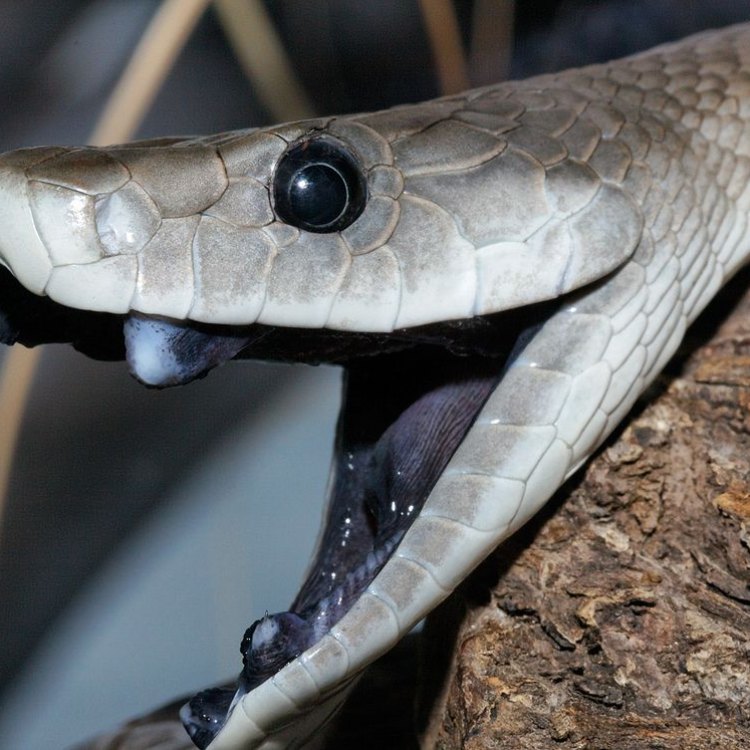
The Black Mamba: A Deadly and Fascinating Snake of Africa
Disclaimer: The content provided is for informational purposes only. We cannot guarantee the accuracy of the information on this page 100%. All information provided here may change without prior notice.


